The Pope Told Michelangelo to Paint the Holy Family
Larn the Intriguing (and Sometimes Controversial) History Behind Michelangelo'southward 'Last Judgment'
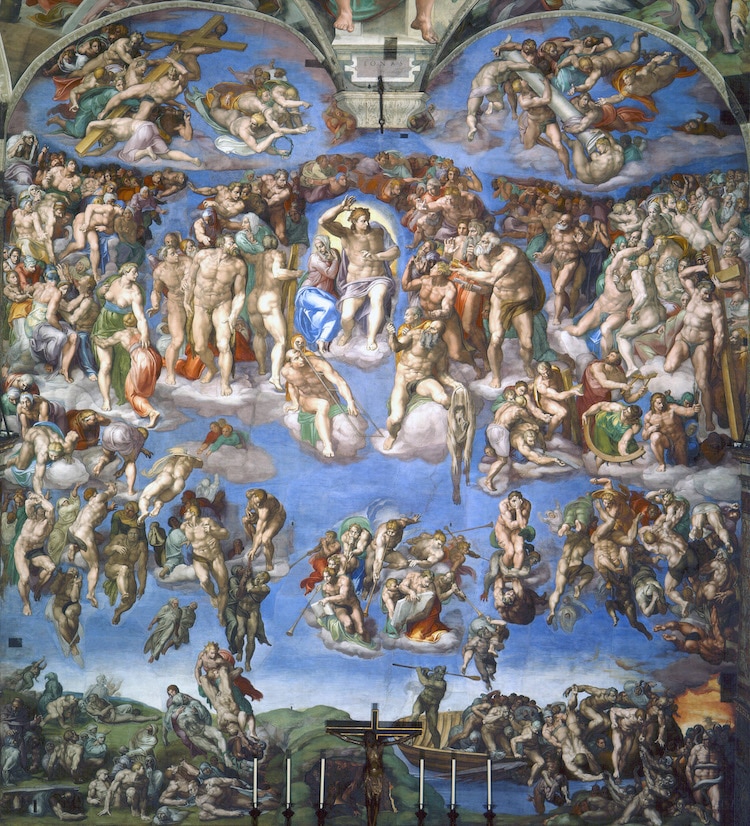
The Final Judgment' past Michelangelo, 1536-1541. (Photo: Public domain via Wikipedia)
Equally one of the greatest artists of all time, Michelangelo has a long list of masterpieces. This genius of the Italian Renaissance was a sculptor, painter, and poet whose work has left an enduring marking on the history of art. Some of his most celebrated pieces can be found in the Sistine Chapel, located inside the pope'south residence at the Vatican in Italy.
When nosotros call up of the Sistine Chapel, mayhap the first thing to come up to mind is Michelangelo's incredible ceiling fresco that shows scenes from the Bible'due south Book of Genesis. All the same, there is another as impressive artistic feat from Michelangelo in the aforementioned room. The Concluding Judgment , which was painted several decades later, is a powerful fresco that covers the unabridged altar wall.
Painted when Michelangelo was fully in his mature style, the artwork instantly made an impact and stirred controversy. While this final judgment of mankind was not an unusual subject for a Renaissance artist to tackle, Michelangelo fabricated it uniquely his ain using a mode that was both appreciated and disparaged.
Allow's have a closer look at the history of this iconic fresco and learn more about howThe Terminal Judgment has made a lasting impact.
Michelangelo'southward Life After the Sistine Chapel Ceiling
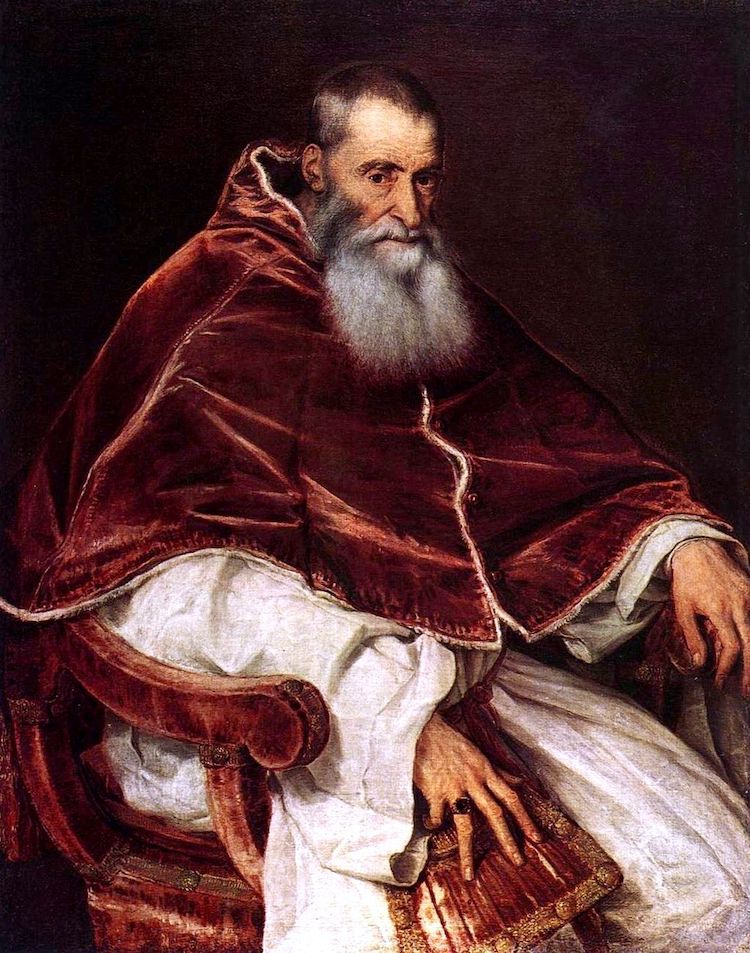
'Portrait of Pope Paul Three' by Titian, 1545. (Photo: Public domain via Wikipedia)
It would accept 25 years to draw Michelangelo back to Rome and the Sistine Chapel. The creative person came into the project after a long, successful period working for the Medici family in Florence. Later on a tumultuous period where the Medici'southward were outset overthrown and then regained power, Michelangelo embraced the chance to return to Rome.
In that location he was welcomed by Pope Cloudless VII, who commissioned the artist to pigment a new fresco on the altar wall of the Sistine Chapel. Unfortunately, the Pope would die before long afterward giving out the commission, but his successor Pope Paul Three made sure that the work was carried out.
Work began in 1534 and ended in 1541 when Michelangelo was 67 years old.
Iconography in The Last Judgement
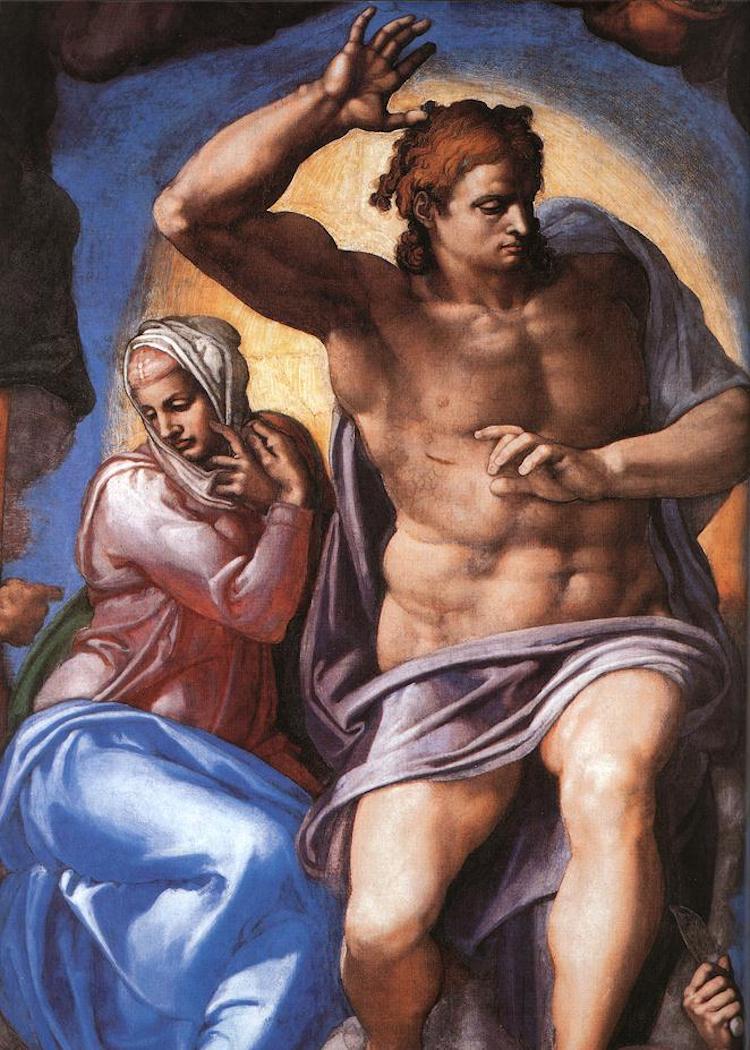
Christ and the Virgin Mary in 'The Final Judgment' (Photo: Public domain via Wikipedia)
This new wall in the Sistine Chapel would have a specific theme—the Last Judgment. The delineation of the Second Coming of Jesus Christ and God's final judgment of humanity was a popular subject throughout the Renaissance. For example, Giotto—thought of every bit the father of the Renaissance—is well known for his Terminal Judgment in the Scrovegni Chapel in Padova.
Michelangelo's take on the subject field has, over time, become iconic. In the fresco, we see over 300 figures expertly painted to deport out this story. Christ sits in the center, his hand raised in casting judgment on the damned who sink into the depths of hell. Ripplingly with muscles, this Christ is an imposing figure.
To his left sits the Virgin Mary. She's taken on a demure pose in contrapposto and looks toward those who have been saved. Immediately surrounding this central pairing is a group of important saints. St. Peter, who holds the keys of Heaven, and St. John the Baptist are both shown on an equal scale to Christ.
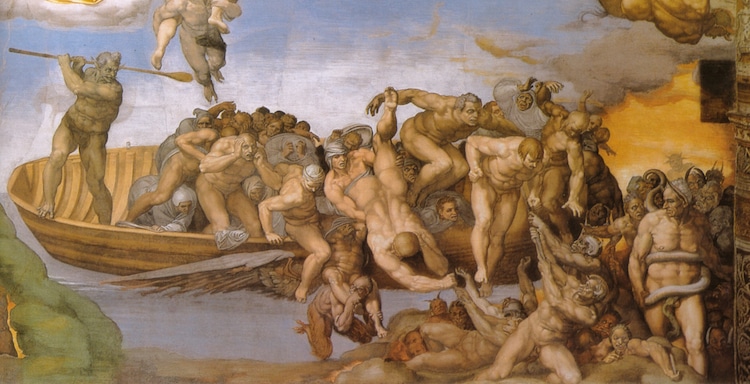
Charon and souls of the damned (Photo: Public domain via Wikipedia)
The overall composition circles in a flowing motion, with the saved on Christ's left pictured ascent up from their graves while the damned are pushed down into hell. At the bottom of the fresco, we see Charon, a mythological figure. In Greek and Roman, mythology he ferried souls to the underworld. Here, he'southward conveying them straight to hell, which is filled with ghoulish characters.
Hidden Symbols in the Painting
Within the overall scheme of the painting, Michelangelo inserted several hidden symbols that take come to delight the public over fourth dimension—though they weren't always appreciated in his solar day.
The showtime is a rather gruesome self-portrait painted into the saint sitting just below Christ'southward left foot. He sits on a cloud with pare in his paw. This is Saint Bartholomew, who was martyred after being skinned alive. Therefore, he'southward not only holding the knife used to flay him but his own flesh, as well. It'due south widely believed that the face on the peel is actually a cocky-portrait of Michelangelo.
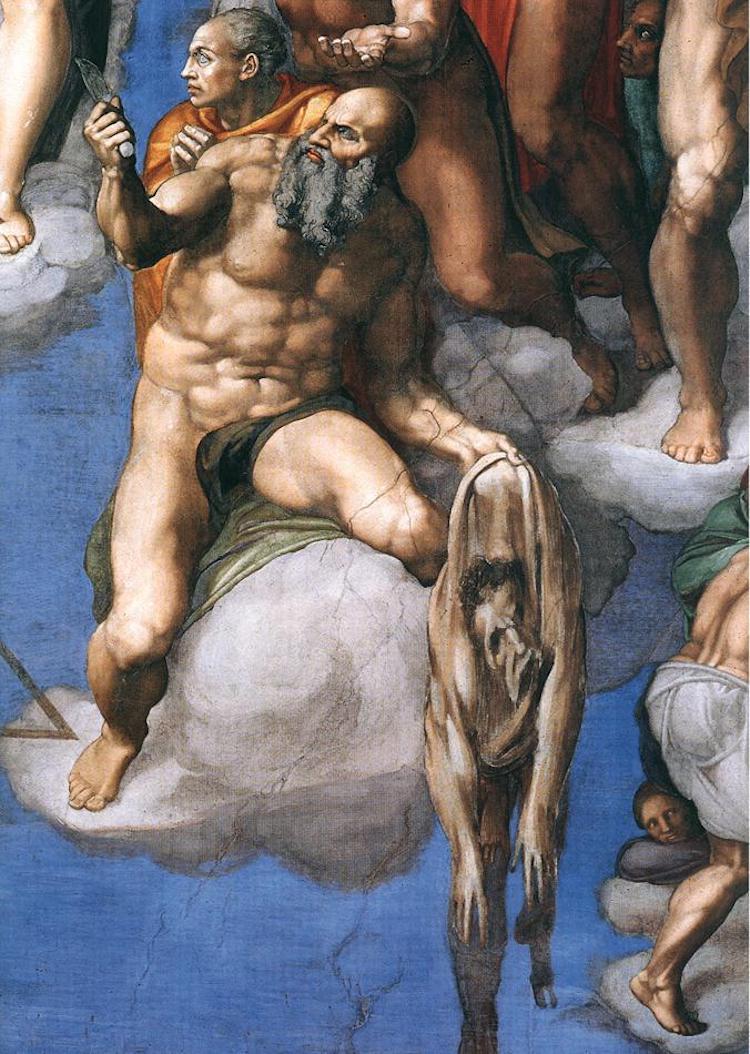
St. Bartholomew. (Photo: Public domain via Wikipedia)
Michelangelo as well added his own flair in a manner that immediately stirred upward controversy. In the lower right corner of the fresco, a group of the damned stands clustered together. Ane peculiarly gruesome effigy is a man that not only has donkey ears—referencing his foolishness—but unfortunately has a serpent wrapped around his body with the snake biting on his private parts.
During a preview of the fresco with Pope Paul 3, his Master of Ceremonies Biagio da Cesena immediately noticed an issue. Somehow, he'd found himself placed into the fresco as this unflattering figure. The character itself is actually Minos, the mythological estimate of the underworld, and somehow Da Cesena had sparked the artist's ire and wound upward downward in hell. When he complained to the Pope about how he was shown in the fresco, information technology'south said that the Pope but joked that his power didn't extend to hell so the portrait would need to stay.
Controversy SurroundingThe Last Judgement
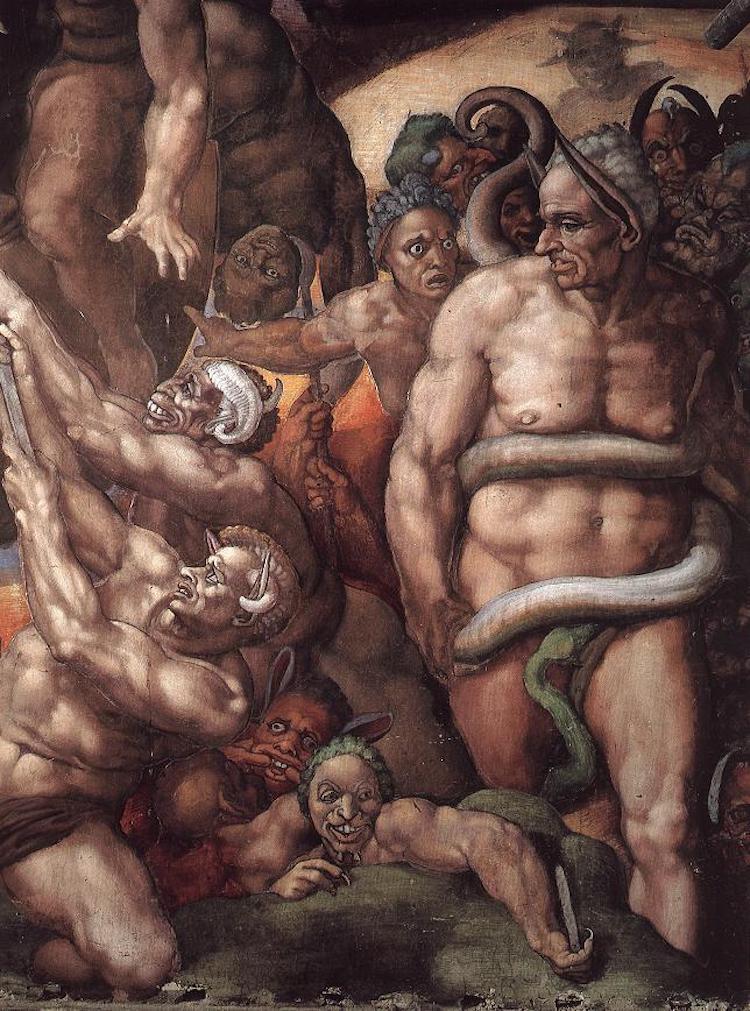
Biagio da Cesena as Minos in 'The Concluding Judgment' (Photo: Public domain via Wikipedia)
It wasn't only Da Cesena who wasn't thrilled with how Michelangelo played with tradition in The Last Judgment. Many within the church were still reeling from the Protestant Reformation and trying to implement spiritual reforms. They didn't appreciate the fashion that Michelangelo mixed mythology with religious figures, and they certainly didn't appreciate the copious amounts of nudity.
Their anger was counterbalanced by those who appreciated the artistry of Michelangelo and felt that the work should exist admired for his genius and painting manner.
Other critics felt that Michelangelo should take adhered more than closely to the effect as described in the Bible. They pointed out that Christ should be seated on a throne and that some of the curtain that appears to blow in the wind wouldn't be possible, as the weather condition was supposed to stop on judgment mean solar day.
The controversy connected to grow in the years following the fresco's completion. This was only emphasized past the new reforms on religious art that the Council of Trent instated in 1563. In the official prescript, anything "superstitious" or "lascivious" was to exist avoided. And, unfortunately for Michelangelo, "the pictures in the Apostolic Chapel should be covered over, and those in other churches should exist destroyed, if they display anything that is obscene or conspicuously false."
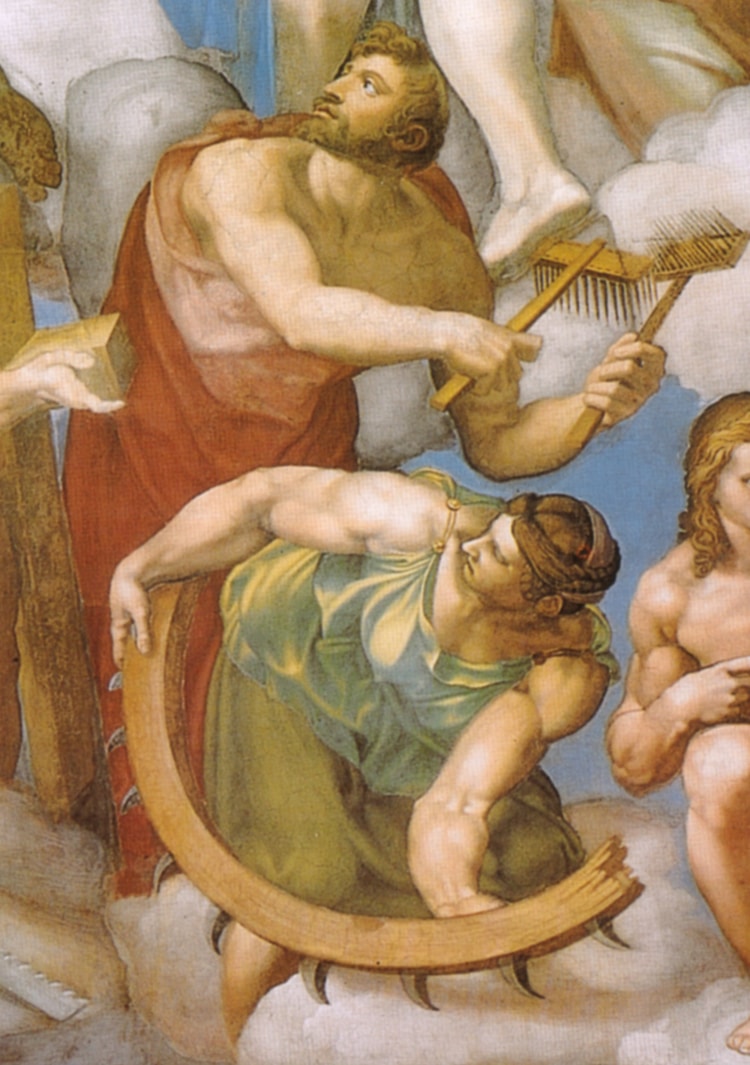
St. Catherine and St. Blaise after being repainted with wearing apparel. (Photo: Wikipedia)
This meant that most likely after Michelangelo's death, a painter went in and covered upwardly visible ballocks with mantle. The work went on in stages, as the chapel needed to be used for official concern at different points. Each intervention was, unfortunately, more than aggressive than the last. In total, nigh twoscore figures had mantle added and ii figures were completely redone. Luckily, since the modifications were done in dry fresco, they were easier to remove.
In fact, when the Sistine Chapel was restored in the 1990s, 15 coverings added after 1600 were removed. It was decided that the 16th-century modification should stay in place to help tell the history of the artwork.
Today, art critics have been kinder to The Last Judgment. While some still balk at the bulky depiction of anatomy and clustering of figures, overall the work is nevertheless considered a masterpiece.
Related Articles:
The Story Backside Raphael's Masterpiece 'The School of Athens'
Exploring Michelangelo's 'Pietà,' a Masterpiece of Renaissance Sculpture
Learn About Masaccio, the Italian Renaissance Painter With a Short Life but Long Legacy
Learn the Remarkable History of Michelangelo's 'Dying Slave' and 'Rebellious Slave' Sculptures
Source: https://mymodernmet.com/last-judgment-michelangelo-sistine-chapel/
0 Response to "The Pope Told Michelangelo to Paint the Holy Family"
Post a Comment